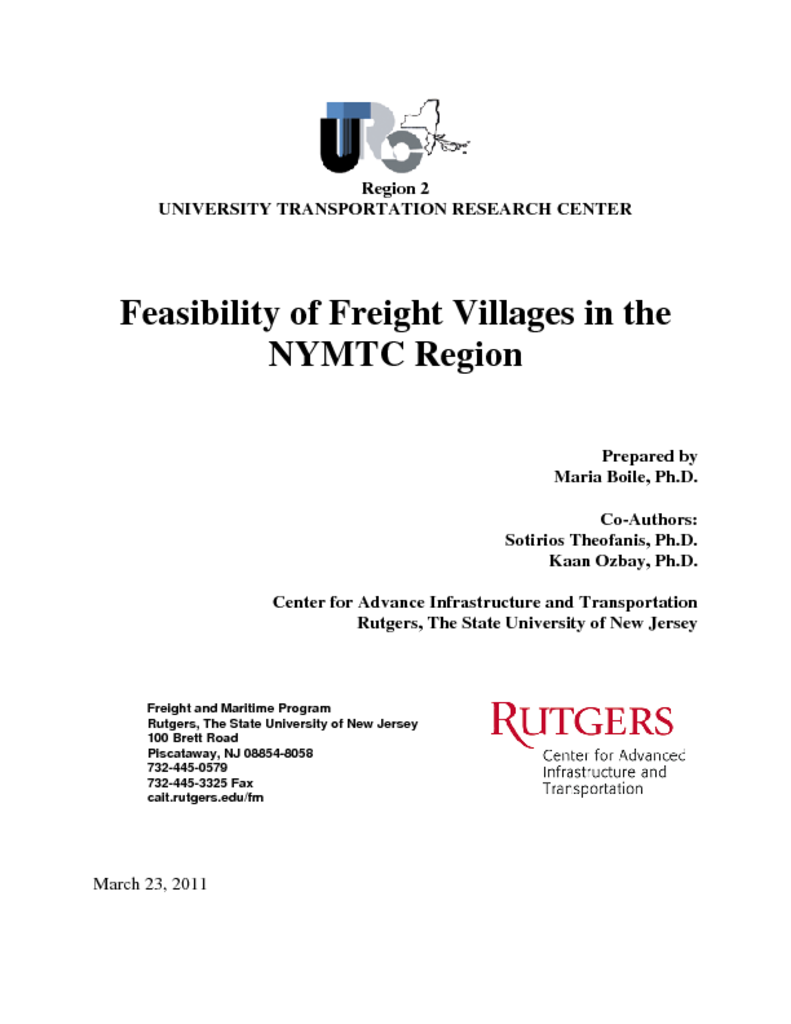This report summarizes the work conducted to analyze the site impact of freight villages. The analysis included assessing traffic, logistics and economic impacts, which are then used to determine the extent to which freight village development has the potential to assist in NYMTC’s regional objectives. The objectives are to mitigate congestion by reducing vehicle miles traveled and increase mode balance, fostering rational and efficient land uses that curb sprawl focus development on desired growth areas, and promote compatible land uses and promote economic development in the form of job creation. The method of assessment is as follows: analyze the generation of truck traffic, where different number of trucks are generated by the type of facility located within a freight village. A typical freight village model was created and was applied to six sites. The number of trucks generated by facilities is estimated using the truck trip rates from the ITE Trip Generation manual and relevant figures. To assess the impact of alternative land uses compared to freight village development, various scenarios were used for comparisons which include development of a business park, an amusement park and a regional park. The traffic impact of a freight village will then be compared to that of alternative developments. After conducting the study and analyzing the potential sites more thoroughly it was concluded that they are suitable for development as freight villages. Previous analysis and international experience shows that networking among freight village facilities in a region enhances their functionalities and increases their potential to achieve clustering effects and to further reduce any adverse impact. As the need for goods in the region grows, so does the demand for freight transport and logistics operations. The current model of various small facilities and large number of truck trips required to accommodate the demand for freight is not sustainable. Freight villages help achieve environmental objectives, having the potential to reduce miles of less sustainable modes of transport and increasing the use of environmental friendly transport modes such as rail and water accessible warehouse facilities.




